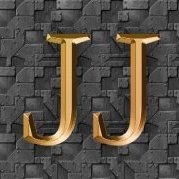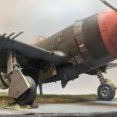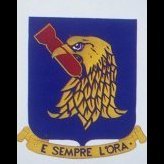Search the Community
Showing results for tags 'Messerschmitt'.
-
We take a look at another new 3D printed set in the Airscale Pro range: Bf109 G2/G4 660 X 160 Wheel Set. Have fun! Iain
-
- airscale
- airscale pro
-
(and 2 more)
Tagged with:
-
We take a look at the latest from Airscale's 'PRO' range - this time a comprehensive set of additions for the Revell 109G2/G4. More to follow! Have fun, Iain
- 1 reply
-
- 109
- messerschmitt
-
(and 1 more)
Tagged with:
-
As part of some upcoming large scale, 3D-printed aircraft cockpit upgrade designs, very happy to announce a model of the World War Two-era "Set, Complete Radio 522-A" ("SCR-522-A") used by the US Army Air Corps, Royal Air Force and Royal Australian Air Force. In RAF and RAAF service, this radio set was known as the TR.5043. This model is available in 1/32 and 1/24 scales. Other scales are possible. Often referred to as a "Signal Corps Radio", the SCR-522-A was installed aboard many aircraft types. For example, the SCR-522-A was a conspicuous feature of the P-51D and P-51K Mustang fighters, installed behind the pilot's armored seat back and visible through the bubble canopy. Very soon, we will be releasing a highly detailed, 3D-printed cockpit for the classic Revell 1/32 scale Bristol Beaufighter (see posts below). Click here for the Model Monkey products in 1/24 scale and 1/18 scale Click here for Model Monkey products in 1/32 scale. Click here for the Model Monkey catalog.
- 391 replies
-
- spinner
- messerschmitt
- (and 19 more)
-
And sooo… I crossed the Rubicon and joined the fray. Come to think of it, three months ago, I knew nothing about the Bf 109 and couldn’t even spell Messerschmitt. Then came the arrival of the ZM kit in our regions and the ensuing flurry of activity in the interweb. My curiosity was piqued especially when controversy aroused about some apparent pitfalls of the kit. I knew ZM since I built their Skyraider a few years back. I knew they were serious about their products so when I read about the early critiques, I knew I had to try it out myself and make my own opinion. So during two full months, I read all I could about the subject and when finally I found the ZM kit at a discounted price , I was ready. This thread is not intended as a WIP per se since there are already several ones en cours but rather to share with you my impressions as a ‘consumer’ of plastic. Hopefully you’d find it helpful or at least entertaining. Each one of us has his own opinions about instruction sheets. As a hardened old-timer, I tend to pass on them most of the time. Except in this case… As I knew next to nothing about the 109, I forced myself to READ (really read) the 50-page instruction booklet included in the kit. What a revelation! It’s obvious that ZM put a great deal of effort in this booklet. So instructive about the subject and plenty of useful tips and pitfalls to avoid. A sample The next thing I wanted to check out is that infamous tail join which caused so much ruckus on the internet. It was indeed curious why ZM contrary to the other manufacturers (Revell, Hasegawa, …) decided to provide the horizontal stabs in one piece and the vertical tail in 2 parts. The reason is simple: the real thing was built that way: So I decided to make a dry test. The fuselage halves are taped together. Only the tail top halves and the horizontal slab halves are glued. NO cement between the horizontal slab, the lower tail and the upper tail. Dry fit indeed! The result speaks for itself. No shim and no glue. Just some extra care in cleaning the stubs when the parts are detached from the sprues. Compare with the real thing. Note the thickness of the flange. One thing to consider. Like on the real thing, the vertical tail is asymmetric. Starboard=flat. Port=curved Viewed from the rear. Note same thickness between upper and lower tail. Also perfect 0° dihedral. Again no glue. Note that RH flange is purposely larger than LH. Also peculiarities on the horizontal stab. This kit is so meticulously researched and moulded that any attempt to ‘correct’ it under some wrong assumption would only lead to tragedy. My advice: read the plan and clean the stubs. Happy modeling! Cheers, Quang
- 10 replies
-
- messerschmitt
- bf109
-
(and 2 more)
Tagged with:
-
Hi Guys, Back with another model that I probably won't ever finish. it's Eduard's new 1/32 Taifun and its not a bad kit at all. Super thin and clear transparencies - optional one piece closed or multi part open. Optional Interior layout and option wheel styles. Lots of colour etch, masks and an optional resin propeller. So out of the box it's pretty good. The etch fret has a full complement of seat belts which is good considering the size of the canopy. First job always for me is to snip out the major parts and have a look-see. Does it have the look and feel of the original? And the first thing that comes to mind? The slats are moulded with the wing upper and lower halves! These are Handley Page automatic slats, spring loaded to droop under a given air speed, so should be pushed out on the ground. Untitled by Bruce Crosby, on Flickr Yup! Getting serious now. box open five minutes and already hacking lumps out of the kit! Untitled by Bruce Crosby, on Flickr And at ten minutes, we have two upper slat parts! Untitled by Bruce Crosby, on Flickr Hacking the lower part of the slat away leaves us with this: Untitled by Bruce Crosby, on Flickr But I had some wide Evergreen strip to hand. Untitled by Bruce Crosby, on Flickr So I stuck the removed upper and lower slat parts together and proceeded to thin and trim. Untitled by Bruce Crosby, on Flickr And reshape! Untitled by Bruce Crosby, on Flickr Tune in for the next thrilling instalment! Regards, Bruce Crosby
-
We take a look at the latest decals from Fantasy Printshop - a really interesting mix of Messerschmitt Bf 109E subjects. Have fun! Iain
- 1 reply
-
- fantasy printshop
- messerschmitt
-
(and 1 more)
Tagged with:
-
Just finished this one. This was on the shelf of doom for quite a while. I had purchased the kit for quite cheap and, due to the shape issues of the kit, it ended up being the last Bf 109 in my kit stash, so I figured I would go ahead and build it. However, I managed to destroy the canopy/windscreen parts before completion and also started to be really annoyed by looking at the shape issues, so I just shelved it. I finally decided to use a vac canopy from my spares and modify it to fit. I also sanded down the huge sharp corners that come off the trailing edge of the wing root fairing, into the rear fuselage. The fuselage cross section still leaves a lot to be desired, but this did improve the overall look of the fuselage, even if only slightly. But, don't even get me started on shape of the nose! In any case, I was able to complete it by adding the canopy mentioned above, MM enamels, oil and pastel weathering. The main decals were from the kit, but the unit/number markings were from a few different sources in my spares and represent an aircraft flown by 1./JG 2 around the Battle of Britain. I also added a few bits from scratch in the somewhat strange looking cockpit. In my rush to finish it, I introduced plenty of problems on my own, but the goal was to just finish it and then decide what I'm going to do next. I would really like to get into the Multi-Engine GB, but not sure what I'm going to do next. Anyway, I'm calling this one done (and I'm also likely done with Trumpeter, spare a couple of kits I already own that are from their "A team", which has apparently disappeared). Thanks for looking, John
- 6 replies
-
- trumpeter
- messerschmitt
-
(and 5 more)
Tagged with:
-
Hello friends Being the first jet fighter jet in the world to enter service, my duty had to be to have it in my collection. Although it was late his introduction in service could have recovered the air supremacy for the Luftwaffe in the Second World War. The model is from the Revell brand at 1/48 scale. Greetings and I hope you like mates
-
- messerschmitt
- 262
-
(and 1 more)
Tagged with:
-
Revell 1/32 Bf 109G-14 with A.M.U.R. Reaver add-ons.
Fencer-1 posted a topic in Ready for Inspection
This is representation of Erla-built Bf 109G-14 "Black 13" from15./JG5 at Kjevik, Norway in 1945. All A.M.U.R. Reaver sets, such as spinner & airscrew, cowling and oil cooler fairing with radiator mesh were used. The plane had late-war finish with several shades of RLM76 on lower surfaces and 75/82 on top.- 38 replies
-
- messerschmitt
- Bf 109
-
(and 3 more)
Tagged with:
-
I lost interest to continue my Revell Fw 190 built and to not lose my modeling mojo altogether, I decided to build another Bf 109. In the end this model should represent a Bf 109 G-6/AS in the colours of Friedrich-Karl Müller from Nachtjagdgruppe 10. Inspiration for this built comes from the blog FalkeEins (http://falkeeins.blogspot.de/2012/08/hans-dittes-ex-hispano-bf-109-g-10.html) and the corresponding very good colour profile from Mr. Hjortsberg. As there is no specific G-6/AS available I try to convert the Hasegawa G-10. I started with the G-10 cockpit set from aires, replacing the Revi with a Quickboost one for an older version. The cockpit set is marketed for the G-10, but I got the impression that Aires just recycled the regular G-6-set, using the old sidewalls that doesn't really fit to the kit parts: WIP_Bf-109G-6:AS_003 by bastelnvormbalkon, auf Flickr Accordingly I had to cut and sand a lot to make the sidewalls fit. I used Gunze RLM 66, details painted by brush, wash with oils, gloss-coat and some Airscale placards: WIP_Bf-109G-6:AS_005 by bastelnvormbalkon, auf Flickr WIP_Bf-109G-6:AS_006 by bastelnvormbalkon, auf Flickr Those Eduard, HGW and Radu - seatbelts with their small buckles are quite fiddly and usually assembling them drives me crazy... This time I tried an alternative, the plastic-seatbelts from FineMolds: WIP_Bf-109G-6:AS_007 by bastelnvormbalkon, auf Flickr Colors from Tamiya and Gunze: WIP_Bf-109G-6:AS_008 by bastelnvormbalkon, auf Flickr The instrument board from Aires is made from clear resin with an acetate-film in the back: WIP_Bf-109G-6:AS_009 by bastelnvormbalkon, auf Flickr I stole some techniques from the armor-modellers to weather the cockpit floor. clockwise: MiG-Wash (earth), using a large brush to flip some pigments on, using the airbrush to remove some pigments, then more removing using a brush and finally a flat coat: WIP_Bf-109G-6:AS_011 by bastelnvormbalkon, auf Flickr Joining the fuselage halves. Shoulder harnesses will be added at the end: WIP_Bf-109G-6:AS_013 by bastelnvormbalkon, auf Flickr Thats it for now. Thanks for watching. Nico
-
Happy new year, everyone. I'm ringing in 2018 by wrapping up a build that's been on my bench since September. If you've followed my slow build thread, "Messerschmitts of North Africa," you have followed the progress of this slow, but steady Bf-110E-2 build and, its desert companion, the Bf-109F-4. This is Cyber Hobby's kit 3209 and represents a -110 of 7./ZG26 in Italy. Yep, I know I said it was Messerschmitts of North Africa. I was planning on doing a different paint scheme for a North African bird, but my kiddo liked the yellow cowls of the Italian theater, so I figured I'd do it up for him. All told it is a really nice kit. The molding details are phenomenal and the fit is pretty good. The nacelles and cowls are finicky and the instructions downright suck, but if you've done a few Dragon/CH kits, you're well accustomed to their instructional tomfoolery. For those of you considering it, I would recommend replacement exhausts (quickboost makes some nice resin ones) and maybe an updated seatbelt set. I used an HGW set. Go slow, take your time, and dry fit everything. As an aside... we've all had those kits that just fought us every step of the way, right? This one wasn't one of those. In fact, fortune smiled upon me several times throughout the course of this build. It was almost eerie. For this and the aforementioned 109, I kept a tally of all the hours spent on this aircraft. Here are the stats: Started: 9/16/2017 Finished: 1/1/2018 Days on bench: 107 Total materials cost: $83.47 Planning and preparation time (including seam cleanup): 20.8 hrs Build time: 26.75 hrs Painting time: 26.26 hrs Weathering time: 6.9 hrs Total Time: 87.2 hrs Number of sessions at the bench: 48 Average time per session: 1.82 hrs Average time per day: .81 hrs Okay, this one was a bit of a hail mary. The small clear piece that's supposed to serve as the "glass" for the engine gauges fell inside the cowling as I was trying to remove the liquid mask from it. So, to fashion a replacement, I put a dollop of regular white PVA glue on an index card, let it dry slightly for 5 minutes, then got a blob on the end of a toothpick. Fishing that blob into the holes, I was able to get the glue to fill them in via surface tension. Once it dried clear, I put a little future on it to gloss it up a bit and, in a pinch, it makes a pretty decent stand-in for the missing plastic. Perfect? No, but a damn sight better than an empty hole.
- 14 replies
-
- bf-110
- cyber hobby
-
(and 4 more)
Tagged with:
-
So here's the finished article, up for scrutiny. Gulp!! Link to the build is here for anyone interested. Thanks for taking the time to have a look, any comments, criticism etc. is always welcome
- 4 replies
-
- messerschmitt
- 1/24
-
(and 2 more)
Tagged with:
-
As my participation in the Between the Wars GB from last year was a bit of a letdown, I like to have another go this year building a 1/32 scale kit. I choose the Cyber Hobby Messerschmitt Bf 109 E-3 kit in the markings of the 21st Squadron (Fliegerkompanie 21) of the Swiss Air Force (Schweizer Fliegertruppe). The picture was taken during Summer 1940 at Emmen Air Base. J-377 has the large fuselage Swiss cross introduced in April 1940, but still the roundels under the wings from when the aircraft was delivered (J-313 behind it has the square underwing wakings introduced at the same time as the fuselage markings). J-377 was taken off charge on 28 December 1949 together with all the other remaining Me 109 DBs. Before you get stuck into me about the title, which you think should be Bf 109 E-3, the Emil was known in Switzerland as Me 109 DB and was so mentioned in official documents! And the Doras purchased at the same time were Me 109 Jumo ... Switzerland was the largest export customer of the Emil with a purchase of 80 aircraft, purchased in two lots of 30 and 50 aircraft between Mai 1939 and April 1940, produced at the "Werk Regensburg" (and an additional 9 built from spare parts later). I always wanted to build a Swiss 109 E, but never thought doing it in the large scale. Should be a straight forward build I thought, but reading Georg Hoch's excellent book on the Swiss Messerschmitt 109s (also published in English by Schiffer) made it clear that it will be far from a straight forward build! Why you may ask. well the Swiss purchased the Emils without any weapons and radios! The idea behind that was to fit locally manufactured weapons and radios. In addition, the gun sight was a Revi 3c , the fitted control stick was a KG 11 which was similar to British control sticks and the seat Harness was attached in a different way for whatever reason as well... In a 1/72 scale model. these details are hardly noticeable, but not so in 1/32. The story on the purchase of the Messerschmitt fighters is fascinating and I highly recommend to read Georg Hoch's book which is a great read filled with anecdotes on the Me 109 operation in Switzerland. The following information is from this book: When purchasing the DBs, it was undecided what weapon configuration to use on the unarmed aircraft. At the end it was decided to use two 7.45 mm Fl MG 29 with 960 rounds above the engine and one 20 mm FF-K Oerlikon with 60 rounds in each wing. Compared to the armament installed in German Bf 109E-3 consisting of two 7.92 mm MG 17 with 2000 rounds and one 20mm MG FF in each wing, the Swiss weapons have to be seen as a step back. They also needed several modifications on the airframe to be fitted and had to be loaded manually and not electro-pneumatic as was the case with the German weapons. The Fl MG 29 had been mounted without any off-set and closer together (300 mm compared to 340 mm) which needed modifications of the engine cover and a new ammunition storage and feed which resulted in reduced ammunition by over half compared to the German arrangement. In regards to the radio equipment, it was planed to fit a French radio produced under license in Switzerland. But production got delayed due to France being occupied by Germany. The radio became finally available in limited quantities by the end of 1941, but its performance was poor. Three Flieger Kompannien received the new Me 109 DB in 1939 and Fliegerkompanie 21 was one of them. Originally no special markings had been painted onto the new aircraft. During the war in France, it became o common occurrence that German aircraft flew into Swiss airspace, resulting in several aerial combats with Swiss aircraft including the 109s. The first German aircraft, a Heinkel He 111 was shot down on 10th of May and several more followed until early June. Under the pressure from the German government, the Swiss Air Force stoped attacking intruding aircraft there after. This resulted in very low spirit of the Swiss flying personnel. To lift the spirit, it was decided that it is now acceptable that the Fliegerkompanien are decorating their aircraft with the squadron markings - which was a sharkmouth for Fliegerkompanie 21. Enough about history - So lets commence my build. I chosen the Cyber Hobby kit as it is apparently the most accurate 109 E in 1/32. As I love accessories I got a few too. My plan is to build the model with the engine covered, but incorporating all the modifications the Swiss aircraft had at the time the picture was taken in Summer 1940. But first some riveting was in place as the Cyber Hobby cit looks a bit bare when it comes to rivets - strangely there are some on the kit here and there. I used some drawings to mark where the rivets go. Some pictures are helpful too. Rosie the Riveter does most of the work. And it does make a difference - braking down the monotony of the large surface. The fuselage was next. And several days later, It is all done. Strangely, Cyber Hobby has positive rivets at several places where there shouldn't be. The cockpit of the Swiss 109 E has some noticeable differences of which most are on the Instrument panel Most of the changes circled in red are for the weapons - Top to bottom, two pulleys to arm the two Fl MG 29. Don't know what the handle is at the right. Below is the FF-K cannon selection switch and the ammunition counter. Also note the KG 11 control stick I wanted to incorporate these changes on this build which needed a bit of scratch building. And all together. That is where I am at the moment. Any comments are appreciated. Cheers, Peter
- 24 replies
-
- Cyber Hobby
- Bf 109 E-3
-
(and 1 more)
Tagged with:
-
Here's my Me 262 A-1a Kit: Revell Scale: 1/72 Replacement parts: the starboard engine is a resin part by CMK. While this part is very nicely detailed, it leaves a sizeable gap at the joint between the engine and wing. To fill in the gap, I used generous amounts of Tamiya putty. After lots of wet sanding, the gap was gradually filled in and smoothed. It took a lot of elbow grease, though! The canopy is by Rob Taurus. It's very clear and looks great. In contrast, the canopy supplied by the kit is thick, a poor fit, and has no framing. Scratch-built details: epoxy (wheel bay and interior side-wall components), and thin, transparent hobby wires for the electrical wiring. I also used a spare rod from an academy Me 262 kit. I trimmed this piece with a hobby knife, and glued it next to the canopy tub. In the Revell kit, the details in the wheel bay and underneath the cockpit tub are great. Unfortunately and inexplicably, however, Revell decided to cover up the wheel wheels!!! Using a sharp hobby knife, I removed the plastic covering up the wheel wells. Next, I did a bit of sanding to smooth out the wheel wells' edges. Main Paints: Tamiya As-16 Light Grey, As-29 Grey-Green, AS-12 Bare Metal silver, Xf-22 RLM Grey; Model Master (Enamels) RLM 70 & 71 I hand-painted the squiggles on the wings' uppersurface using a very fine, sharp-pointed Tamiya brush (Item 87074). I used enamel Model Master RLM 70 for these dark green squiggles. The original photos of the subject aircraft reveal that these squiggles on the wings were crisp and rather well-delineated. On the other hand, the same photos show that the squiggles on the fuselage were somewhat wider and definitely less well delineated. The squiggles on the fuselage also show two distinct tones, whereas the monotone appearance of the squiggles on the wings suggests the use of one very dark color. The base color for the wings is Tamiya AS-29 Grey-Green. The fuselage base color is AS-16 light grey. The squiggles on the fuselage consist of the Model Master paints for RLM 70 &71. For the fuselage squiggles, I traced the outlines on thin notecards. I then cut around the outlines with a hobby knife. In this way, I used pieces of notecard as templates. I taped the templates onto the fuselage with bits of Tamiya masking tape before spraying the relevant areas with the airbrush. This process was very time-consuming! Speaking of airbrushes, this was my first experience using one. Some of the squiggles on the fuselage were painted with a very basic Tamiya badger 350 airbrush, while others were painted with Tamiya's Spray Work airbrush. It wasn't until after I had already started the painting process that I upgraded and bought the Tamiya “Spray Work set. Needless to say, I found the Spray Work airbrush to be superior and it gave me much more control when painting. Decals: A mix of Cutting Edge decals and EagleCals decals. In my experience, EagleCals decals are the best. They are very thin and slide on beautifully. Check out the decal representing the rectangular shaped stencil underneath the windscreen on the port side. I got it from a decal sheet belonging to a Limited Edition hasegawa kit. Any comments and feedback is much appreciated! Regards, Jon
- 4 replies
-
- Me 262
- Messerschmitt
-
(and 1 more)
Tagged with:
-
I was in need of more glue and visited the nice LHS. Got this stuff for 50$ Need to dig for references as there are one or two options on the sprues. This build is started but doesn't have priority. I have a bunch i need to finish first.
-
Have you ever been looking through a book, or perhaps surfing the net and come across a photo(s) of an airplane that just grab you and make you say to yourself, "I MUST build that!"? Well, this is exactly what happened to me with this build. Earlier this year, I was searching around the web for photos of a suitable scheme for the Dragon 1/32 scale Bf 110C-7 kit that was in my stash. My intentions were to build a day-fighter with this earlier variant of the type, saving a nightfighter scheme for a possible 110G-4 kit/conversion. However, when I found this one photo, everything changed. I knew instantly that this was "the one". After a bit of research, it was determined that this was actually a Bf 110D of NJG 3, based at Schleswig, most likely in 1941. Being that this is the only known photo of this particular aircraft, which is not the best quality and doesn't show much for markings, it was a bit of a challenge to come up with the rest. However, that also leaves a little more room for artistic license, which I certainly applied, but tried to keep it on a realistic level, based on references and photographs of other Bf 110s. The camouflage was based on the typical RLM 65/71/02 scheme, but with additional splinter added to the top in RLM 70 and, for the night intruder role, the undersurfaces being painted black. Being that I had the C kit and was trying to model a D, there were some parts that needed to be swapped and a fellow board member was gracious enough to help me out with that. Beyond that, here are some of the other additions and modifications that I made to the kit: *Eduard "Zoom" set for the cockpit *HGW seatbelts *Quickboost exhaust pipes *Eagle Cals decals (only used some of the stencils) *The "Nachtjager" squadron shields were kindly donated by another fellow member and, aside from the few maintenance stencils, were the only decals used. All other markings were painted *Montex Masks (used for most of the primary markings, as well as the inside and outside canopy masks) and a few of my own masks to cover what was not included, or wouldn't work, from the Montex set. *Aber machined brass barrel set for the Bf 110 *Added the pneumatic lines to the belly MG/FF cannon tray from wire *Various wiring/plumbing in the pilot's area of the cockpit *Details from the Zoom set and some wire on the Revi reflector sight *Grab handles and release lever added to the canopy from wire/plastic scrap *Cut the leading edge slats from the wing (not separate in the kit) and modified them to the deployed position *Removed canvas shroud form the rear gun and made a new shroud frame from scratch with wire/plastic *Made the release cable along the fuselage for the life raft from fishing line and the eyelets that it runs through from wire *Brake lines added from wire *Antenna from E-Z Line *Modified the prop blades slightly and added aluminum tubing to the center of the prop hub The Dragon 110 kit is pretty well known by now, as it's been around for several years and many other great modelers here have built it (and I'm thankful for all their help along the way!). The kit itself is actually excellent. The amount of detail, the engineering and the fit are all top notch. The only issues I had with it (which were few and minor), were likely all self-inflicted. The biggest downfall of the kit is actually the instructions, which leave out a lot, or are just plain wrong in some spots and color call-outs are pretty much non-existent. However, corrections and additions are easily found on the web, from those who have built it. This was a great help and is probably the only thing that allowed me to finish this kit, start to finish, in about 21 days. I have to thank everyone who helped me out with this project, from all the parts/materials assistance, the research (especially Fernando Estanislau for contributing to the initial research thread!) and the encouragement and constructive comments along the way. The WIP thread for this build can be found here: http://forum.largescaleplanes.com/index.php?showtopic=59192 On to the pics. Hope you enjoy them as much as I enjoyed building this one! John MORE TO COME....
- 45 replies
-
- messerschmitt
- bf 110
-
(and 2 more)
Tagged with:
-
Hello everyone, This is my Me 262 by Academy. The markings and paint scheme represent "Black 4." This Me 262 served with JG7 and was found abandoned at an airfield in Prague. The decals are mostly from Cutting Edge. I used Tamiya paints, including AS 23(light green), AS 24 (dark green),and AS 5 (light blue). Based on my interpretation of the black and white photos and commentary I've read about "Black 4," I went for an overall RLM 83 upper-surface. For the replacement nose section,I tried to make it look like a very light shade of RLM 76. I sprayed multiple coats of Tamiya AS5 and TS 27 (Matt White) in an attempt to achieve this effect. Enjoy! Please let me know what you think. >Jon
-
Last one for today, I promise. . . Here we have the fiddly and complex Trumpeter Me.262B-1a/U1. Although a bit of a slog to build that fights you in many areas, it really does build up into an impressive rendition of the legendary Swallow. Kit is OOB except for BarracudaCast wheels and Master Models radar antenna. Finish is RLM 76 with 75 spots over black using Model Master enamels. Please feel free to share any comments or criticism. That's how we get better! -Daniel S. Westminster, CO
-
There are new prop and supercharger intake for late models, such as 109G-10 and 109K. This airscrew have late type broad chord blades and suitable for Hasegawa and Revell 109's. Supercharger intake intended for Hasegawa's Bf109K/G-10 and for our future G-6AS conversion and G-10 correction set for Revell sets.
- 3 replies
-
- Messerschmitt
- 109
-
(and 3 more)
Tagged with:
-
Yup, after defeating Costa Rica in the WC Soccer quarter final I have finished this build! No pics yet, but tomorrow I will make some beauty shots for you all. It's 2 AM here now so i need to get some sleep first. Cheers! With my Sparrow build nearly completed (you can find it here if interested: http://forum.largescaleplanes.com/index.php?showtopic=47233&hl=) I started a new build. This time the Cyber-hobby BF109E-3. It's a beautiful kit to build, with no major flaws. Since the kit is practically engineered to show of the engine, that's exactly what I decided to do. The build will be pretty much OOB, with the exception of: Master-model MG-17 barrels. Aires Radio Equipement. I won't use the on of the paint schemes provided with the kit, but instead build a 1940 early-war E3: (For reference only) Allthough the engine is of great detail, it still devoid of any wiring except the ignition cables. Here's my progress so far on the engine and cockpit. Enjoy! And I also installed the radio equipement and started to paint it. Closing the fuselage, much of this won't be visible, but it's nice to know it's there .
- 28 replies
-
- Messerschmitt
- 1/32
-
(and 3 more)
Tagged with:









